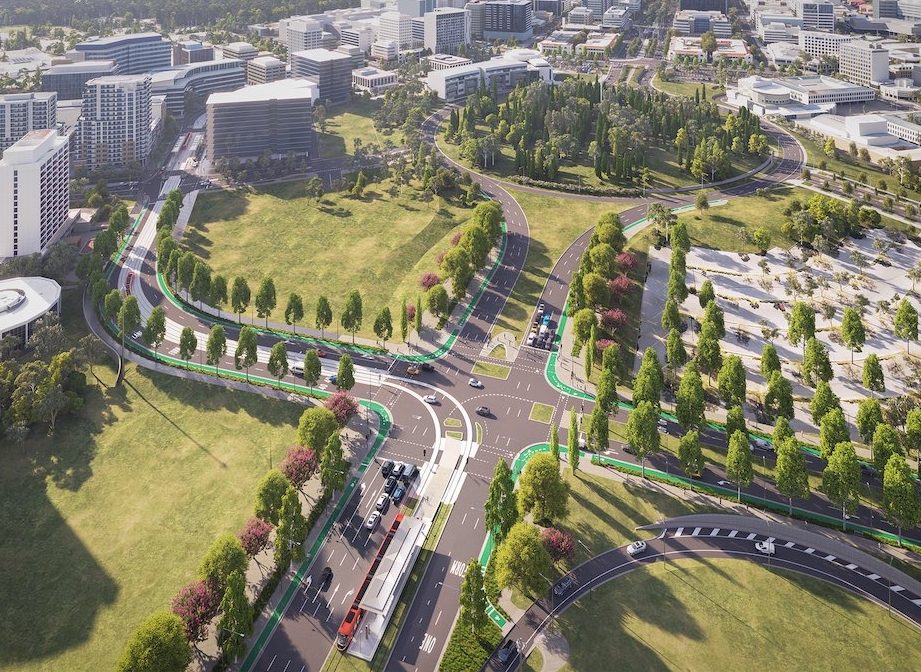
“The construction of light rail stage 2a is bloody minded and is a reckless approach to development issues,” writes planning columnist MIKE QUIRK.
In my involvement in the planning and development of Canberra since the late ’70s, the decisions to develop light rail and the ill-disciplined approach in determining where Canberra should grow have been the greatest planning failures.

They represent the triumph of ideology over empirical research.
At self-government a rich planning legacy was inherited including a hierarchy of town, group and local centres providing accessible employment, facilities and services; a high-quality road network including peripheral parkways; an inter-town public transport route; well-designed suburbs and an efficient land development process.
The city’s development had been under-pinned by a detailed understanding and analysis of planning and development issues.
The legacy has been eroded by the failure of ACT governments to respond coherently to emerging social, economic and environmental challenges.
The government’s penchant to rely on twaddle rather than evidence is apparent in its decision to develop light rail (LR). Beatrice Bodart-Bailey (CN, January 26, 2023) outlined the process well.
The consultant firm URS found bus rapid transport (BRT) would be half the cost of LR, bring roughly twice the profit and produce the same development as LR along the line. It concluded BRT was the most cost effective option. Without evidence it then stated LR was the best outcome for Canberra.
The analysis was commercial-in-confidence at the time.
In 2013 in a website article then-minister Simon Corbell, justified the decision by stating LR produced better social, economic and environmental outcomes than the “do-nothing” option, but suspiciously no mention was made of an evaluation of BRT.
The decisions to develop LR stage 1 and 2a (Civic to Commonwealth Park) were heavily criticised by the ACT auditor-general (among others) especially the failure to justify the claimed wider economic benefits.
For LR Stage 1 it estimated the benefit-to-cost ratio (BCR) was 0.48, (that is, the return for every dollar spent was less than 50 cents). In stage 2a, the BCR is even lower.
At the recent sod-turning ceremony for stage 2a, a deceit of politicians descended to hyperbolically shovel superlatives such as “city shaping”, “sustainability”, future proofing”, “transformative”.
All praise that can’t be justified without LR having been assessed as superior to alternative strategies including BRT, trackless trams, additional transit lanes, parking and employment location policies and increased coverage, frequency and electrification of the bus fleet.
The assessments would consider the rapid advancement in bus and autonomous cars technology and the increased number of people working from home.
If the analysis has been done, where is it? The government’s obfuscation is the source of ongoing disquiet and has hindered the community from developing an informed opinion of the merits of LR.
Despite an environment of high debt and extensive unmet community needs, the ACT government has doubled-down in its support for the expensive and disruptive 2a stage and Stage 2b and dismissed or ignored calls to provide evidence for the decision, an attitude framed in the context of an unelectable opposition, a disinterested electorate and a compliant bureaucracy.
A responsible government would have undertaken detailed assessments to ensure its infrastructure priorities were providing the best outcomes for the community.
The government’s secretive and deceptive approach is in stark contrast to that of Perth’s City of Stirling in its consideration of the merits of trackless tram.
It released the finding of an independent 2024 business case (funded by $2 million from the federal government) which provided strong support for the trackless tram system, linking the Perth CBD and Stirling City Centre to Scarborough Beach.
The business case found the trackless tram to provide the best balance of cost and benefits compared to the do nothing, light rail and BRT alternatives.
The trackless tram had an estimated capital cost of $864 million at 90 per cent confidence and a benefit-cost ratio of 1.96.
Council voted to note the business case and share it with the state and federal governments to advocate for the implementation of trackless trams.
Similarly, the Brisbane City Council and the Queensland government chose BRT after considering LR for the Brisbane Metro, on the grounds BRT was substantially more cost-effective.
It is difficult not to conclude the ACT government has not undertaken the needed analysis. The failure is likely to have already cost the community hundreds of millions of dollars and the cancellation of 2a would incur substantial undisclosed penalties.
The construction of 2a is bloody minded and is a reckless approach to development issues.
As Andrew Barr and Shane Rattenbury will not offer a mea culpa for their ineptitude, independents Fiona Carrick, Tom Emerson and Senator David Pocock should show their mettle by pressuring the government to be straight about the project.
The project is a likely boondoggle. It ranks high in the annals of government incompetence and a nail in the coffin of good governance in the territory.
Mike Quirk is a former NCDC and ACT government planner.
Who can be trusted?
In a world of spin and confusion, there’s never been a more important time to support independent journalism in Canberra.
If you trust our work online and want to enforce the power of independent voices, I invite you to make a small contribution.
Every dollar of support is invested back into our journalism to help keep citynews.com.au strong and free.
Thank you,
Ian Meikle, editor









Leave a Reply